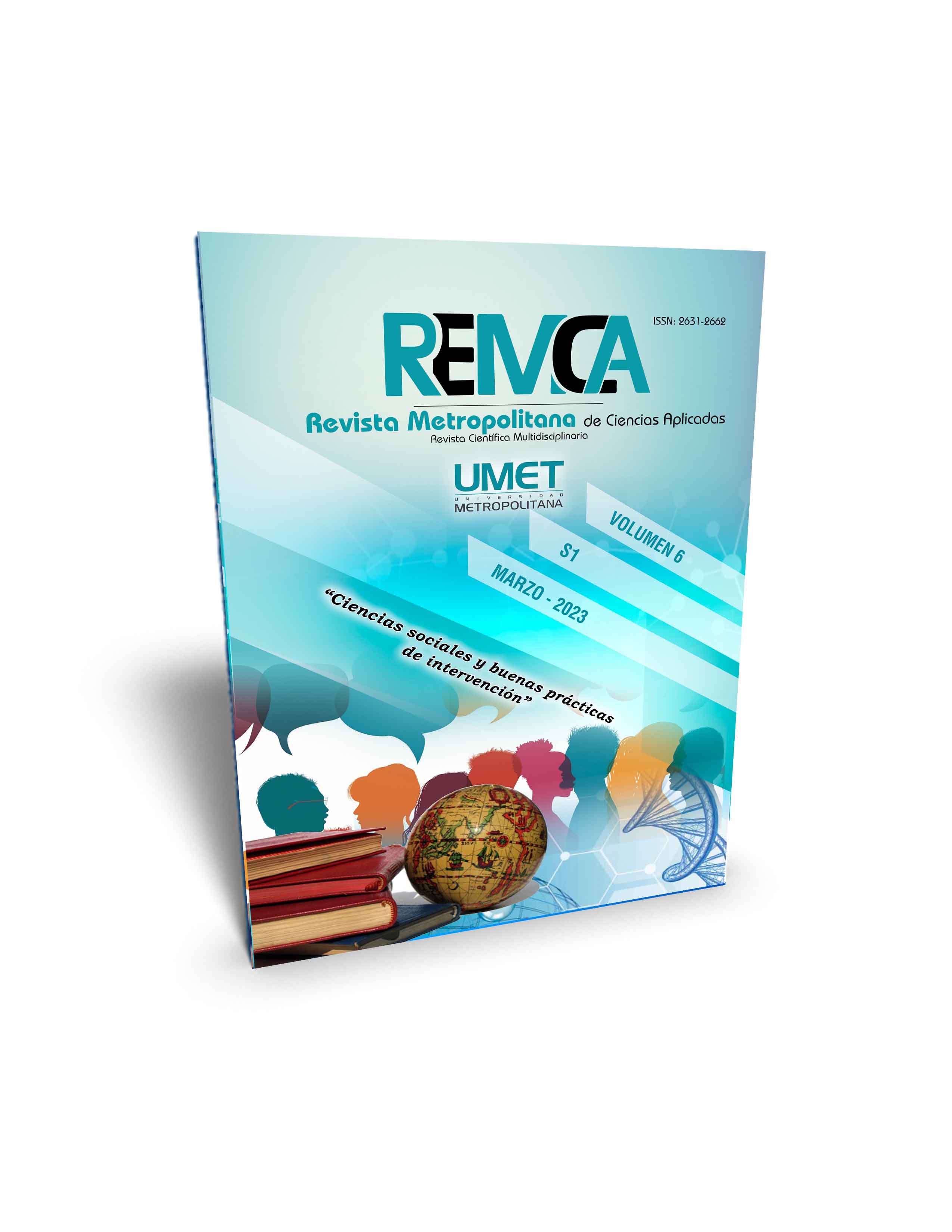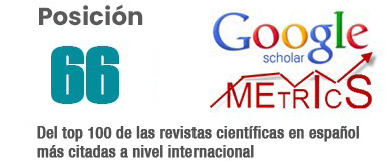Mechanical closure of spaces through the use of TAD in orthodontics
DOI:
https://doi.org/10.62452/h42ayq32Keywords:
Space closure, orthodontics, mini-implants, DKLAbstract
The incorporation of temporary anchorage devices (TADs) in orthodontic treatment has revolutionized the mechanics of space closure by sliding and/or friction, since it completely improves anchorage and three-dimensional dental control. TADs have also become a widely used absolute-temporary anchorage device due to several advantages such as their low cost, ease of placement and removal, possible immediate loading, reduction of treatment time and possible placement in most areas of the alveolar bone; However, different mechanics are defined that seek to explain tooth movement, sometimes leading to a contradiction of concepts. Literature was selected through a search in the following electronic databases: Pubmed, Lilacs, Google Academic, Elsevier and Proquest. The information search was performed from January 2013 to January 2023 including all languages. After the evaluation of the search trees, 521 articles were considered, then the inclusion and exclusion criteria were applied, resulting in 14 articles that meet the parameters for this review. The available literature revealed that the use of TAD and an adequate and intelligent selection of space closure mechanics would shorten the orthodontic treatment time by approximately 6 months for the management of any malocclusion.
Downloads
References
Aguilera Córdova, P. E., Vásquez Ortega, B. R., Ortega López, M. F., Ramírez Romero, D. E., & Ramos Montiel, R. R. (2022). Manejo ortodóntico conservador en paciente braquifacial. Reporte de caso clínico. Revista Odontología, 24(1).
Alobeid, A., Korkis, R., Popat, H., & El-Bialy, T. (2022). Unilateral Upper Central Incisor Space Closure Using Palatal Mini-Implants. J Clin Orthod., 56(2), 77-88.
Boff Lemos, A. R., Feitosa Borges, M., Morais Peloso, R., Salvatore Freitas, K. M., & Pinelli Valarelli, F. (2021). Mesialização de molar por meio de mini-implantes: uma solução para perda de dentes com comprometimento radicular. Journal of Multidisciplinary Dentistry, 10(2), 141–147.
Bustos-Bravo, A., & Ramos-Montiel, R. (2022). Correlación tomográfica de la distancia transversal maxilar y la inclinación de molares permanentes superiores en adultos clase I esqueletal. Polo del Conocimiento, 7(4), 1806–1822.
Cocios Arpi, J. F., Trelles Méndez, J. A., Jinez Zuñiga, P. A., Zapata Hidalgo, C. D., & Ramos Montiel, R. (2021). Correlación cefalométrica del mentón y cuerpo mandibular en adultos jóvenes andinos, año 2019. Revista Dilemas Contemporáneos: Educación, Política y Valores, 6.
Converse, J. M., & Horowitz, S. L. (1969). The surgical-orthodontic approach to the treatment of dentofacial deformities. American Journal of Orthodontics, 55(3), 217–243.
De Lima Araújo, L. H., Goncalves Zenóbio, E. G., Pacheco, W., Greco Cosso, M., Manzi, F. R., & Shibli, J. A. (2012). Mass retraction movement of the anterior upper teeth using orthodontic mini-implants as anchorage. Oral and Maxillofacial Surgery, 16(1), 95–99. https://doi.org/10.1007/s10006-011-0260-2
Derton, N., Lupini, D., & Cozzani, M. (2017). Miniscrew-Supported Orthodontic Pseudo-Ankylosis for Mesialization of a Lower Third Molar. Journal of Clinical Orthodontics: JCO, 51(5), 290–293.
Deshmukh, S. V., & Patil, A. S. (2016). Temporary Anchorage Devices in Bimaxillary Protrusion. Journal of Dentistry and Orofacial Surgery, 01(02).
El Gemeay, W., Nadim, M.., Hamed, B., Bedair, T., & El-Kadi, A. (2015). Miniscrews supported maxillary en-masse retraction with and without palatal corticotomy. Egyptian Orthodontic Journal, 47, 19-33.
Estefanía, P., Córdova, A., Rafael Vásquez Ortega, B., Fernanda Ortega López, M., Emanuel, D., Romero, R., Roossevelt, R., & Montiel, R. (2022). Manejo ortodóntico conservador en paciente braquifacial. Reporte de caso clínico. Revista Odontología, 24(1), e3562–e3562. https://doi.org/10.29166/ODONTOLOGIA.VOL24.N1.2022-E3562
Hatrom, A. A., Afify, A. R., & Hassan, A. H. (2019). Nonsurgical Orthodontic Intervention of a Severe Class II Case Accompanied by Posterior Crossbite Using a Miniscrew-Assisted Straight Wire Technique. Case Reports in Dentistry, 2019. https://www.hindawi.com/journals/crid/2019/5696370/
Kocadereli, I. (2002). Changes in soft tissue profile after orthodontic treatment with and without extractions. American Journal of Orthodontics and Dentofacial Orthopedics, 122(1), 67–72.
Kuroda, S., Yamada, K., Deguchi, T., Kyung, H. M., & Takano-Yamamoto, T. (2009). Class II malocclusion treated with miniscrew anchorage: Comparison with traditional orthodontic mechanics outcomes. American Journal of Orthodontics and Dentofacial Orthopedics, 135(3), 302–309.
Kyung, H. M., Park, H. S., Bae, S. M., Sung, J. H., & Kim, I. B. (2003). Development of orthodontic micro-implants for intraoral anchorage. Journal of Clinical Orthodontics: JCO, 37(6), 321–328.
Manhartsberger, C., & Seidenbusch, W. (1996). Force delivery of Ni-Ti coil springs. American Journal of Orthodontics and Dentofacial Orthopedics: Official Publication of the American Association of Orthodontists, Its Constituent Societies, and the American Board of Orthodontics, 109(1), 8–21.
Melo Pithon, M., Lacerda dos Santos, R., Tirre de Souza Araújo, M., & Cople Maia, L. (2012). Orthodontic Mini-implants: Are They a Good Anchorage Resource for Cases of Retraction After Extraction? International Journal of Odontostomatology, 6(3), 369–374.
Negi, N., Sharma, D., Chandel, M., & Jhingta, P. (2015). Microimplant assisted extraction space closure: Biomechanical considerations. Journal of Dental Implants, 5(1), 87-89.
Ordoñez Pintado, A. R., Trelles Méndez, J. A., Carrión Sarmiento, M. V., Zapata Hidalgo, C. D., & Ramos Montiel, R. Roossevelt. (2021). Cephalometric proportionality between the chin and its ante- rior projection in young andean adults. Revista Científica de La Universidad de Cienfuegos, 13(5), 439–444.
Palone, M., Casella, S., De Sbrocchi, A., Siciliani, G., & Lombardo, L. (2022). Space closure by miniscrew-assisted mesialization of an upper third molar and partial vestibular fixed appliance: A case report. International Orthodontics, 20(1). https://doi.org/10.1016/j.ortho.2021.100602
Park, H. S., & Kwon, T. G. (2004). Sliding mechanics with microscrew implant anchorage. Angle Orthodontist, 74(5), 703–710.
Park, H. S., Kwon, O. W., & Sung, J. H. (2005). Microscrew implant anchorage sliding mechanics. World Journal of Orthodontics, 6(3), 265–274.
Ramos Montiel, R. R. (2022). Theoretical epistemic foundation of the maxillofacial cranio-cervico diagnosis Fundamento teórico epistémico del diagnóstico cráneo-cérvico maxilofacial. Rev Mex Ortodon, 7(4), 180–182.
Ramos Montiel, R. R., Cabrera Cabrera, G. E., Urgiles Urgiles, C. D., & Jara Centeno, F. E. (2018). Aspectos metodológicos de la investigación. RECIAMUC, 2(3), 194–211.
Ramos Montiel, R., Puebla-Ramos, L., Ribadeneira-Morales, L., Guerra-Mendoza, Y., & Sáenz-López, N. (2021). Relationship between Intermolar Width and Tooth-Bone Discrepancy in Children: A Cross-Sectional Study. Int J Cur Res Rev, 13(18).
Ricketts, R. M. (1976). Bioprogressive therapy as an answer. Ajodo, 70(3), 241–268.
Samuels, R. H., Rudge, S. J., & Mair, L. H. (1998). A clinical study of space closure with nickel-titanium closed coil springs and an elastic module. American Journal of Orthodontics and Dentofacial Orthopedics: Official Publication of the American Association of Orthodontists, Its Constituent Societies, and the American Board of Orthodontics, 114(1), 73–79.
Santos Silveira, G., Valli de Almeida, N., Tavares Pereira, D. M., Trindades Mattos, C., & Mucha, J. N. (2016). Prosthetic replacement vs space closure for maxillary lateral incisor agenesis: A systematic review. American Journal of Orthodontics and Dentofacial Orthopedics, 150(2), 228–237.
Segovia, W. D. (2012). Actualización sobre la clínica de cierre de espacios por mecánica de deslizamiento. segunda parte. Ortodoncia, 75(151), 34-41.
Sia, S. S., Shibazaki, T., Koga, Y., & Yoshida, N. (2009). Experimental determination of optimal force system required for control of anterior tooth movement in sliding mechanics. American Journal of Orthodontics and Dentofacial Orthopedics, 135(1), 36–41.
Thiruvenkatachari, B., Pavithranand, A., Rajasigamani, K., & Kyung, H. M. (2006). Comparison and measurement of the amount of anchorage loss of the molars with and without the use of implant anchorage during canine retraction. American Journal of Orthodontics and Dentofacial Orthopedics, 129(4), 551–554.
Tizini, M., & Ibrahim, G. (2014). Retraction of the upper maxillary incisors with corticotomy-facilitated orthodontics and mini-implants. Saudi Journal for Dental Research, 5(2), 146–151.
Upadhyay, M., Yadav, S., & Nanda, R. (2014). Biomechanics of incisor retraction with miniimplant anchorage. Journal of Orthodontics, 41, 15–23.
Upadhyay, M., Yadav, S., Nagaraj, K., & Patil, S. (2008). Treatment effects of mini-implants for en-masse retraction of anterior teeth in bialveolar dental protrusion patients: A randomized controlled trial. American Journal of Orthodontics and Dentofacial Orthopedics, 134(1), 18–30.
Wilmes, B., Shwarse, J., Vasudavan, S., & Dresher, D. (2021). Maxillary Space Closure Using Aligners and Palatal Mini-Implants in Patients with Congenitally Missing Lateral Incisors Palatal Implants in Orthodontics View project Virtual Surgical Planning View project. Journal of Clinical Orthodontics: JCO 55(1), 20-33.
Zhang, N., Bai, Y., & Li, S. (2012). Treatment of a class II Division 1 malocclusion with miniscrew anchorage. American Journal of Orthodontics an
Downloads
Published
Issue
Section
License
Copyright (c) 2023 María Isabel Sánchez-Chiriboga, Christian David Zapata-Hidalgo (Autor/a)

This work is licensed under a Creative Commons Attribution-NonCommercial-ShareAlike 4.0 International License.
Authors who publish in Revista Metropolitana de Ciencias Aplicadas (REMCA), agree to the following terms:
1. Copyright
Authors retain unrestricted copyright to their work. Authors grant the journal the right of first publication. To this end, they assign the journal non-exclusive exploitation rights (reproduction, distribution, public communication, and transformation). Authors may enter into additional agreements for the non-exclusive distribution of the version of the work published in the journal, provided that acknowledgment of its initial publication in this journal is given.
© The authors.
2. License
The articles are published in the journal under the Creative Commons Attribution-NonCommercial-ShareAlike 4.0 International License (CC BY-NC-SA 4.0). The terms can be found at: https://creativecommons.org/licenses/by-nc-sa/4.0/deed.en
This license allows:
- Sharing: Copying and redistributing the material in any medium or format.
- Adapting: Remixing, transforming, and building upon the material.
Under the following terms:
- Attribution: You must give appropriate credit, provide a link to the license, and indicate if any changes were made. You may do this in any reasonable manner, but not in any way that suggests the licensor endorses or sponsors your use.
- NonCommercial: You may not use the material for commercial purposes.
- ShareAlike: If you remix, transform, or build upon the material, you must distribute your creation under the same license as the original work.
There are no additional restrictions. You may not apply legal terms or technological measures that legally restrict others from doing anything the license permits.




